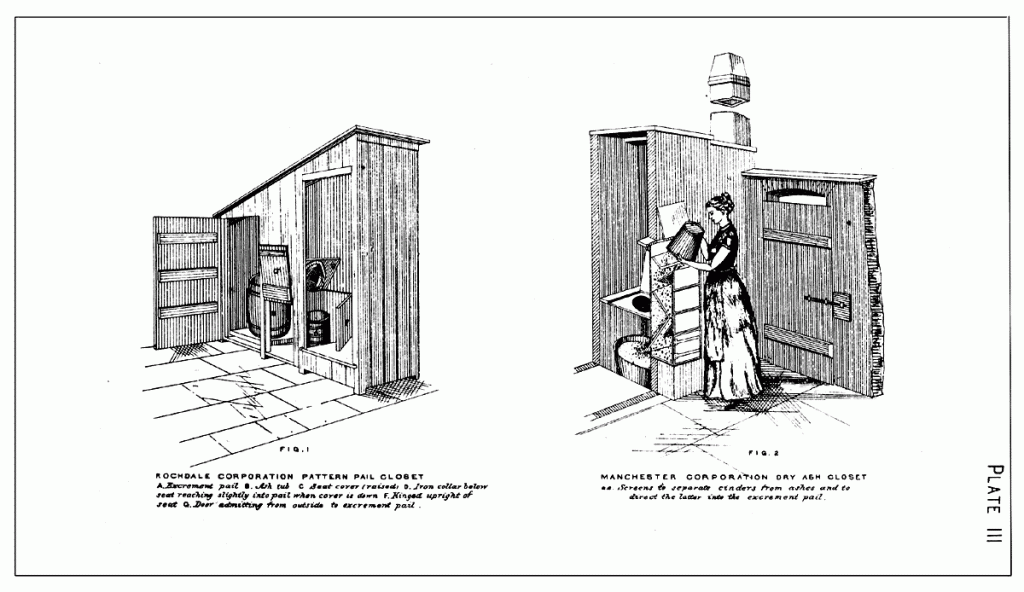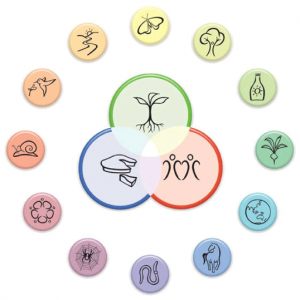Eco Not Ego: De-Centering the Human in Design
Posted on December 19, 2012 | posted by:What would Water have to say were she at the design table?
When we make plans to lay more impermeable concrete for a new street, I wonder if Water would agree. I highly doubt it. Perhaps Water might say, “People, I realize you are well meaning but think of me. I will not be able to restore the aquifers that you rely on for drinking water and irrigating your crops. You will have to install heavy construction to bring my nutrients from further and further away. Please think twice and decide differently.”
When we shifted from the Earthen Closet to the Water Closet, I wonder how Water would have weighed in. “Why use me to wash away your shit when you can use it to fertilize the earth?” she might have asked. When we take a step back, flush water toilets are quite suicidal: we are taking the most precious resource in threat of scarcity and using it to rid ourselves of a material that naturally decomposes and fertilizes soil. Indeed, the depth of our human-centered advancement, continues to nourish our unknowing of how to sustainably and abundantly live with the earth.
In case you haven’t heard, nature comes with design instructions. We simply have to study with her. I discovered the garden is a fantastic learning lab. Whole systems (soil quality, water, temperature, etc), scalar thinking (seasons, food yield, compost, etc), iterative processes (seeding, flowering, decomposing, reproducing, etc), and collaboration (plant species, pests, pollinators, etc) are all valuable lessons gained from the garden learning lab.

For all the exciting, optimistic hype surrounding human-centered design we still have a long way to go. Reeling design back in from being a puppet to capitalist interests is definitely celebrated. Expanding from products to services is fabulous. The new passion for good and self-reflection within the discipline is grand. Nonetheless, it is still humans who created global warming. It is still humans who decided to engineer nuclear energy. It is still humans who pack over 500 million tonnes of waste into landfills each year (and these numbers are dated).
It we truly want to grow into our humanity, we need to go past it. We need to seek past our own species and learn from the many other life forms we share our planet with. Pollinators, coral reefs, mycelium, forests. All of these play a tremendous practical and symbolic role in our ability to continue living. The same way Human-Centered Design recognizes the importance of designing with communities for a lasting solution, we must begin designing with the earth and other living species if we seek a sustainable future.
Permaculture offers a robust set of tools that can enable this level of designing with. As a sustainable design methodology I prefer to explain permaculture as the distillation and codification of indigenous wisdom. “The cutting edge of a 10,00 year old technology!” Brock Dolman of Occidental Arts and Ecology Center likes to proclaim. A phrase coined in the 1970s by Bill Mollison and David Holgrem in Australia, permaculture originally referred to ‘permanent agriculture’. It has continued to evolve into a global community of practitioners with increasing numbers of urban residents receiving their Permaculture Design Certificates (PDC), a two-week fulltime intensive in permaculture design skills and strategies. The application of permaculture has also expanded, still rooted in human settlement patterns but increasingly finding application in the design of just communities and social services, also known as social permaculture.
As a framework for sustainable design, Permaculture is grounded in three core ethics: Earth Care, People Care, and Fair Share. These values offer enough openness and cohesion for a rich diversity of practitioners and exploratory practices to nonetheless be working towards a common vision of sustainability. Based on these three ethics, permaculture is further guided by 12 design principles. They are:
- Observe and interact
- Catch and store energy
- Obtain a yield
- Apply self-regulation and accept feedback
- Use and value renewable resources and services
- Produce no waste
- Design from patterns to details
- Integrate rather than segregate
- Use small and slow solutions
- Use and value diversity
- Use edges and value the marginal
- Creatively use and respond to change
I received my PDC in Summer of 2010. It was a significant paradigm shift. I knew the world, socially and ecologically, was in pretty bad shape, but I had no idea just how bad a predicament we put ourselves. From agriculture to toilets, we had it all wrong. Failing to design with whole systems thinking, we put nature in the periphery and ignorantly centered ourselves. This skewed perspective dug us into a hole we are now scrambling to climb out of. Had I approached the world from a different perspective earlier, perhaps through the eyes of the Amazon Rainforest or maybe the California King Salmon, this new depth of understanding would, most likely, not have been so new.
Equally as shocking however, is how readily available solutions are. Many are still in practice around the “developing world.” Many more are being rediscovered by the industrialized world. Hopefully we can learn from each other, innovating and reworking old technologies for new scenarios. Most importantly, I hope we find the courage to step beyond “our world” (developing or industrialized) into the greater expanse of life; de-center ourselves and in the process, more fully realize our humanity and its contributive potential to a sustainable future.

